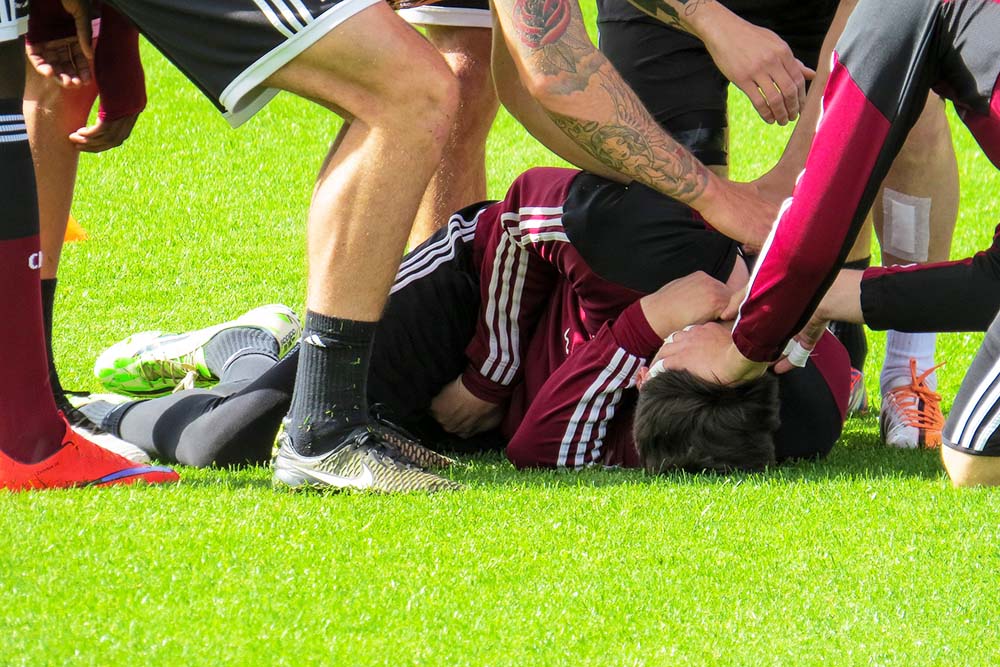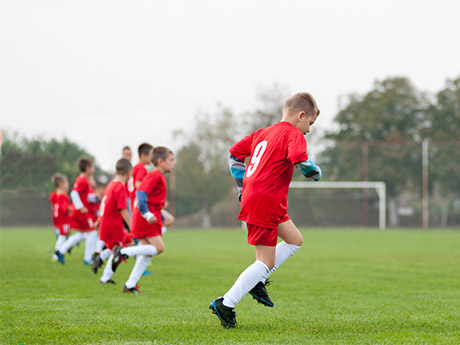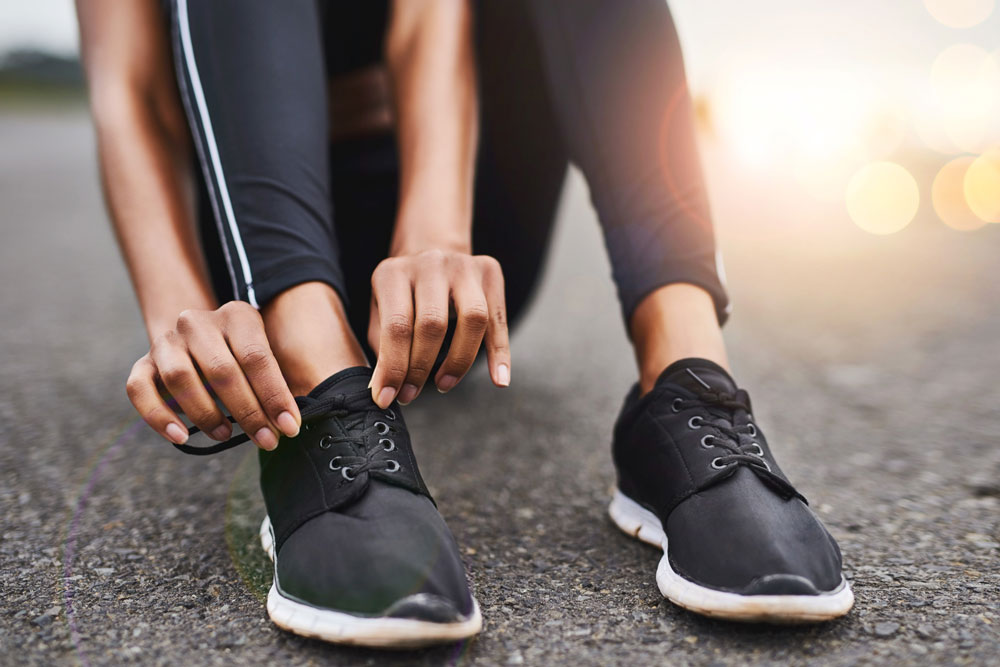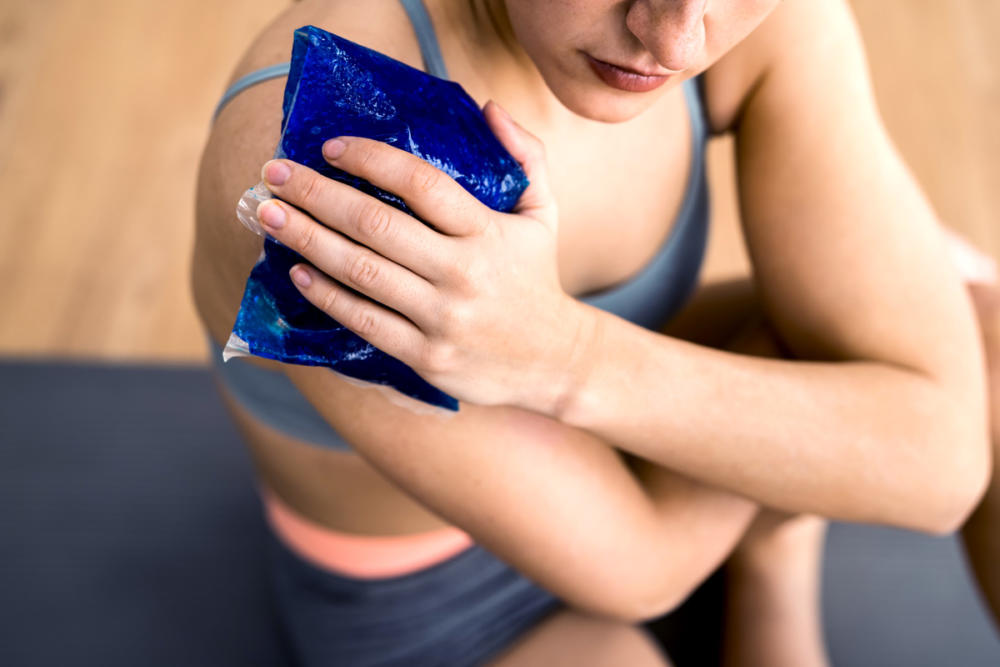by Vince Kame PT, MS, ATC
In almost all aspects of today’s society, it seems like kids are acting and performing much older than their age. From communication on the internet to sociologic decisions to participating in sports. The level of sophistication is advanced compared to many years ago.
Unfortunately, the development of the body has not and will never catch up to the demands of today’s world. We are seeing more and more injuries in those who participate in sports as kids, and those injuries are more similar to those we see in adults. Forty-eight million young people participate in sports between the ages of 5 and 18. There are 2 million High School Athletes who are responsible for 500,000 doctor visits and 30,000 hospitalizations each year. Injuries will occur, but The Center for Disease Control estimates ½ of the injuries in youth sports are preventable. Here are some ways to decrease the risk we all take when participating in sports.
1. Build a Strong Foundation: Once the sport is picked and the equipment is fitted properly, it is important to learn the fundamentals and basic techniques. Many injuries are caused by the athlete attempting to perform tasks they are not ready for or doing something incorrectly. Unfortunately, some youth sports coaches are well-intentioned but not well trained. Seek out leagues that have their coaches undergo training and certification processes that ensure they know how to coach the fundamentals of the sport. The demands of the sport on the body demand proper preparation.
2. Warm-up & Cool down: Do not rush to either play the game or, once the game is over, get on to the next task. Proper warm-up and cool-down are critical for injury prevention. At one-time pre-game or practice, routines were long static stretches. We now know that stretches held for long periods of time will cause weakness in the short term. This is why we do more dynamic type stretching and warming up before participation. It is important to get the muscles warm and to achieve the proper length dynamically so that they are prepared to do the functions we are about to ask them. The PEP program was developed by Southern California University specifically for female soccer and was shown to significantly decrease the incidence of ACL injuries in that population. Other similar programs have been developed and can be accessed through a strength and conditioning specialist. Once the game or practice is complete, then a proper cool down is needed. This is when the longer-held stretching is done so that as the muscle cools, it is maintained in a lengthened position.
3. Hydration: Another critical aspect in both injury prevention and performance is hydration levels. Especially in Arizona, it is very important to maintain proper hydration levels. This must be maintained at all times, not just before or during the athletic event. Monitor urine colors. The color of the athlete’s urine should be equivalent to a lemon aide, not apple juice. Make sure that the athlete is drinking water throughout the day, every day. For every 2% decrease in hydration levels, there is a 10% decrease in muscle performance. There have also been correlations between dehydration and slower reaction times, and poor decision-making. Both of these can lead to potential injuries. On the game or practice day, it is recommended to drink 10 – 15 oz 2 – 3 hours prior, 8 – 10 oz 15 minutes prior, and 8 -10 oz every 15 to 20 minutes of participation.
1. Equipment: Each sport has its own equipment. One of the easiest and best ways to prevent some injuries is to make sure that the equipment used is in good shape and fitted well. This is critical in sports, such as football, baseball, and hockey, where there is a large amount of equipment worn. Helmets, shoulder pads, hip, and thigh pads, as well as others, need to be sized well so that they can serve the functions that they were designed for. This includes one of the more hated to-wear equipment, the mouth guard. Each association has equipment fitting specifications on their websites which should be reviewed before purchasing.
5. Diversify: One troubling aspect of youth sports today is the trend to specialize in one sport earlier and earlier. This specialization has led to overuse injuries that we used to not see. Playing multiple sports will reduce the overuse stress placed on tissues and help develop overall athletic skills instead of just those used in one sport. As the athlete develops and the body matures, the risk of overuse and repetitive trauma decreases. Sports for young people can be fun, rewarding, and safe with proper preparations. Do not shy away from having your child participate in sports to avoid the risk of injury. Take the precautions and preparations listed above so that your child can take full advantage of what sports can offer.
To recap:
- Learn the fundamentals of the sport and get the correct training.
- Perform a good dynamic warm-up and proper cool-down.
- Maintain an adequate hydration level.
- Use the proper equipment and ensure it is in good working order and fitted correctly.
- Do not be in a rush to specialize in one sport. Participate in several sports to acquire more athletic skills and reduce overuse and repetitive trauma.
How can Foothills help?
At Foothills Sports Medicine Physical Therapy, we design each rehabilitation program custom to each athlete. We will assess how you move as it relates to your sport to identify the site of injury and the source of any pain or weakness. Addressing the underlying cause is essential for healing any injury, preventing recurrence, and getting you back on the playing field. If you have experienced a sports injury, give us a call or request an appointment for a free rapid injury assessment.







